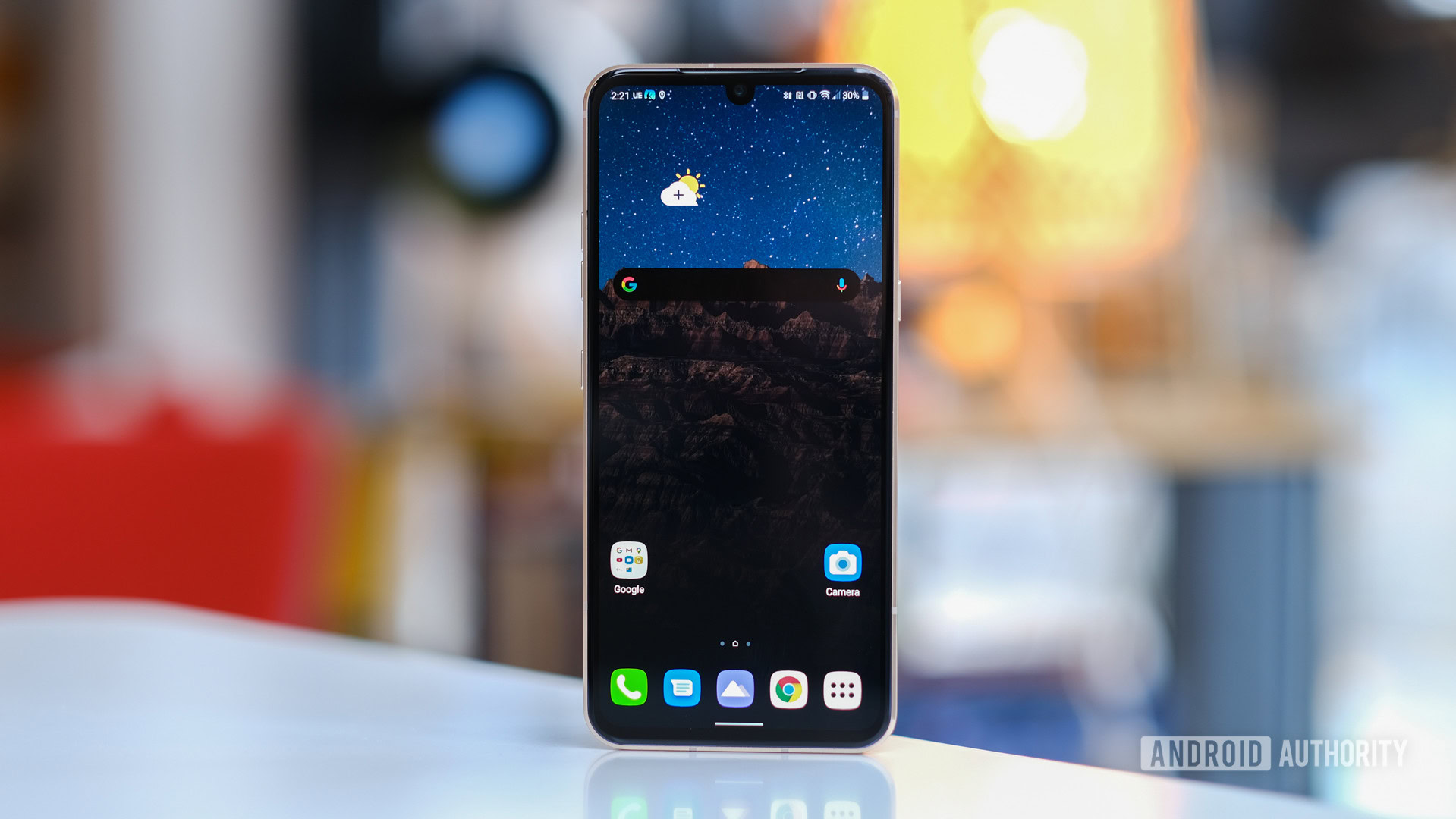Affiliate links on Android Authority may earn us a commission. Learn more.
LG V60 one year later: Is it still worth buying?
March 21, 2021
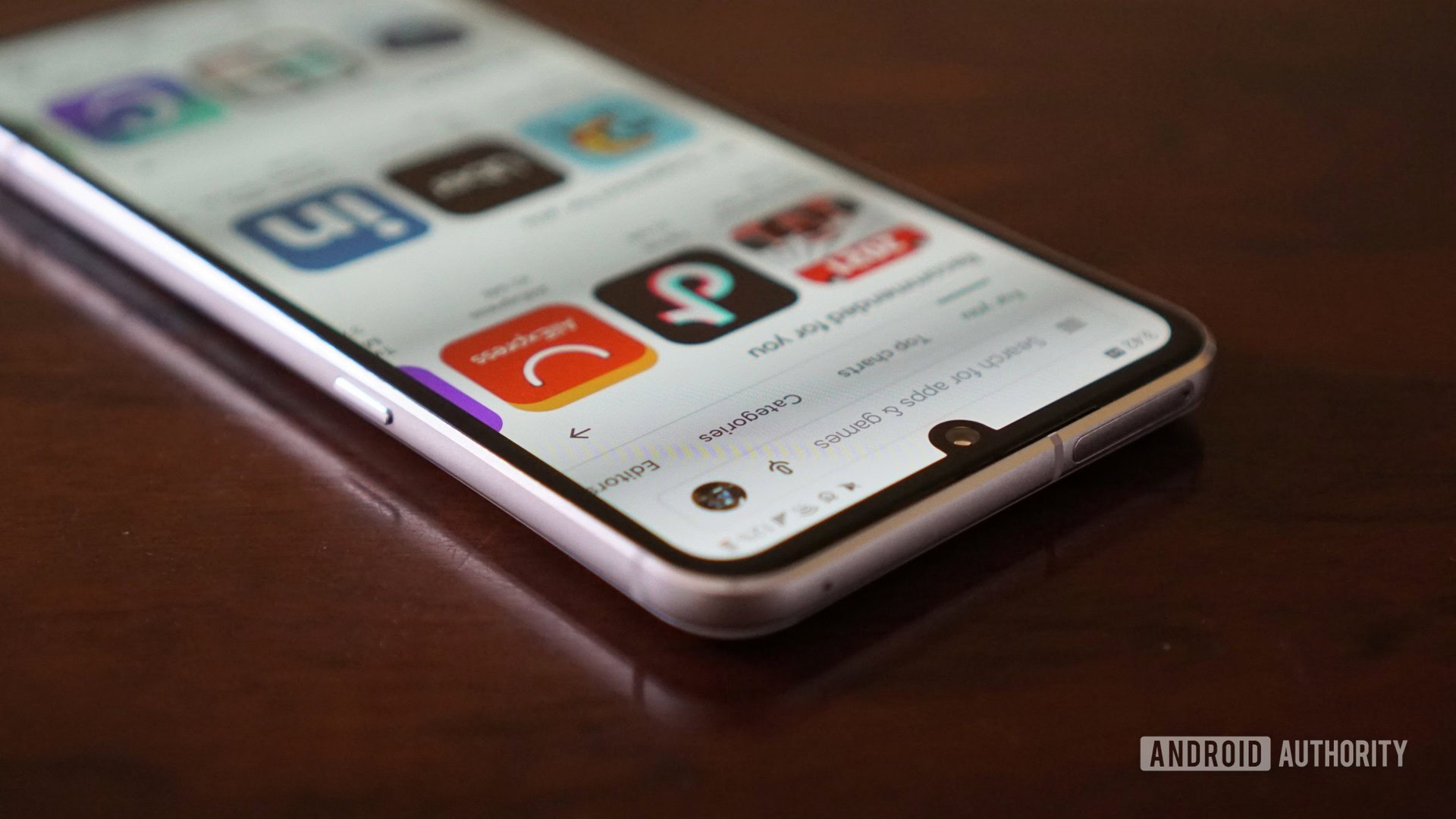
LG enters 2021 with uncertainty as the company is reviewing loads of options (including a sale) for its unprofitable mobile division. Nevertheless, it’s tough to argue that last year’s LG V60 wasn’t a solid step forward for the company.
LG’s last full-blown flagship phone highlighted the firm’s strengths at the time of its release. From the increasingly rare headphone port to great audio-related features, and several premium extras (i.e. wireless charging and water resistance).
A report out of South Korea suggests that the LG V60 successor is on indefinite hold. On the eve of the phone’s one-year anniversary, has it held up enough to be a worthy potential send-off for the company’s flagship phone series? Find out in this LG V60 long-term review.
LG V60 review recap
Before we hop into our current thoughts on the LG V60, you can watch our original review above or read the written review.
How has the hardware aged since last year?
From a pure core specs perspective, the LG V60 is still an extremely capable smartphone. That’s because the Snapdragon 865 chipset is paired with 8GB of RAM and 128GB of expandable storage. The processor still keeps things running at a smooth pace, such as system menus, webpages, the camera app, and more.
Advanced 3D games and emulators run fluidly too. In fact, we used the LG V60 to update our emulator guide to run emulators like Dolphin, Citra, and Play. Furthermore, the recently announced Snapdragon 870 processor is essentially a mildly upgraded Snapdragon 865. Even some of 2021’s affordable flagships will be roughly in line with the V60 in terms of horsepower.
Endurance isn’t an issue for the phone, either. The 5,000mAh battery means one and a half to two days of everyday usage isn’t a problem. I could get two full days of usage and six hours of on-screen time using Telegram, Reddit, local music playback, and 30 minutes or so of podcasting via the speakers.
For what it’s worth, I’m currently not living in an area that has 5G connectivity. I would’ve likely experienced slightly reduced battery life if I were connected to 5G. The bottom line here is that unless you play games or record video for hours on end, you shouldn’t have to worry about getting to the second day.
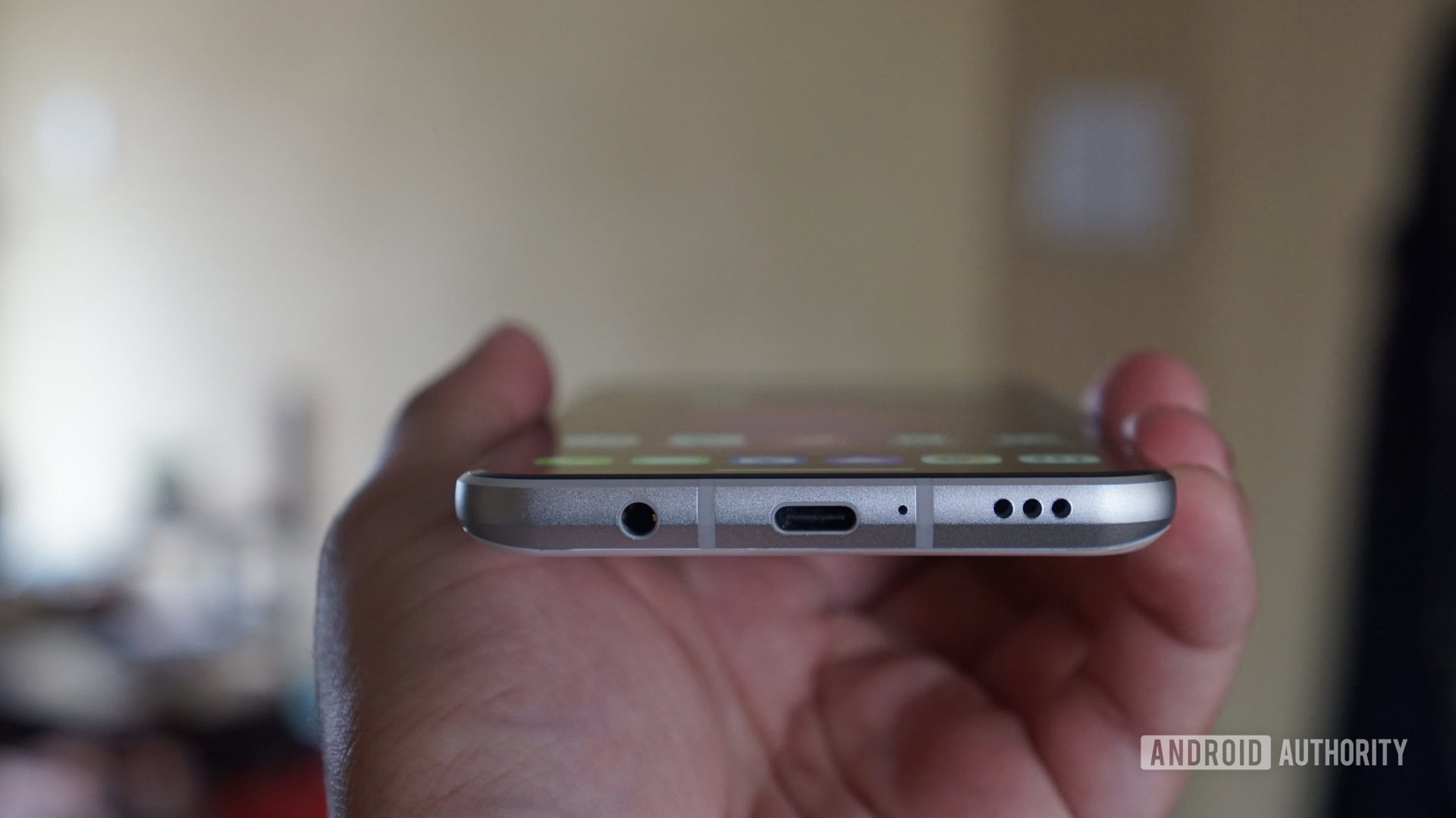
Audio is another category the LG V60 nailed last year. This still holds true today. The quad DAC/3.5mm port combo makes for an impressive addition if you have premium wired headphones or simply want the flexibility of the port. There’s also a pair of speakers that do a fantastic job if you’re like me and you listen to podcasts in the shower, delivering volume in spades.
The 6.8-inch FHD+ OLED screen still offers a mostly pleasant experience. A full HD+ panel stretched out like this might leave you with some reservations, but I couldn’t spot any individual pixels during my testing. Because it’s an OLED panel you’re also getting inky blacks, which melt into the darkness when using the phone at night (e.g. always-on display, Kindle app with night mode).
The LG V60 has aged very well a year later, although the lack of fast charging and a high refresh rate are still disappointing.
The phone doesn’t have a high refresh rate, although using the screen is a smooth experience. The omission was disappointing at launch and is even more disappointing a year later as high refresh rate screens are ubiquitous.
Staying with the screen, the phone packs an in-display fingerprint sensor that does the job well enough, albeit a touch slower than its contemporaries. A bigger issue is its placement near the bottom of the screen. This is a rather awkward position for such a long phone, and the company should’ve moved it closer to where your thumb would naturally rest. LG isn’t the only offender here, but that doesn’t make it less awkward.
LG also recently pushed out the Android 11 update to the LG V60, so you’ve got at least one big update waiting for you if you choose to buy this device. Will it receive Android 12 in a timely manner? Judging by the Android 11 timetable for Germany, I wouldn’t count on it.
It’s still a long boi
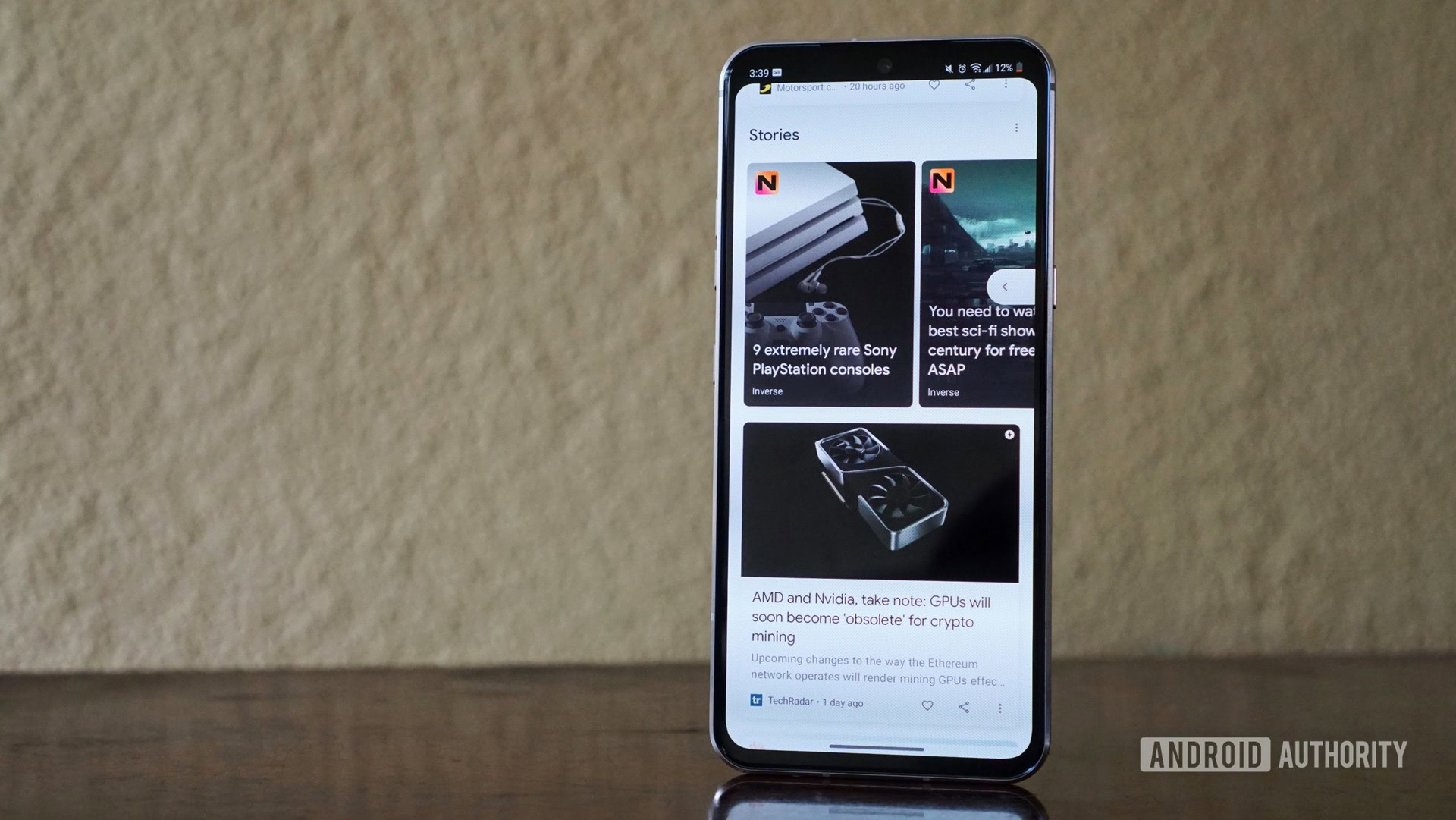
One design decision I still can’t get to grips with is the tall form factor. It’s taller than even the Galaxy S20 Ultra, another very long boi that launched last year. In fact, I bought the Razer Kishi USB-C controller, and it falls foul of Razer’s dimensions for a compatible phone. Sure, I could remove the rubber inserts and stretch the controller, but I’d rather not risk breaking it because LG doesn’t know the meaning of “too long.” The phone does feel narrower than expected, but I think this is partially because of the device’s length. It has some heft to it as well, weighing in at almost 220g. You’ll really notice this if you put it in your jeans pocket.
More reading: A look back at the biggest Android smartphones ever made
The phone’s waterdrop notch felt a little dated back in 2020 and certainly feels more dated today. You can hide the notch via the Second Screen settings page (and this works in dark mode now), but it only works in LG apps and the system menu. As soon as you open Chrome or any other third-party app, you’re staring at the notch again. This is a pretty weird limitation when other OEMs offer the ability to hide the notch in almost every app.
Either way, the long screen and waterdrop notch are just two blemishes on a fine, sturdy piece of hardware. If anything, the LG V60 plays it too safe on aesthetics, but it definitely doesn’t feel cheap.
What about the cameras?
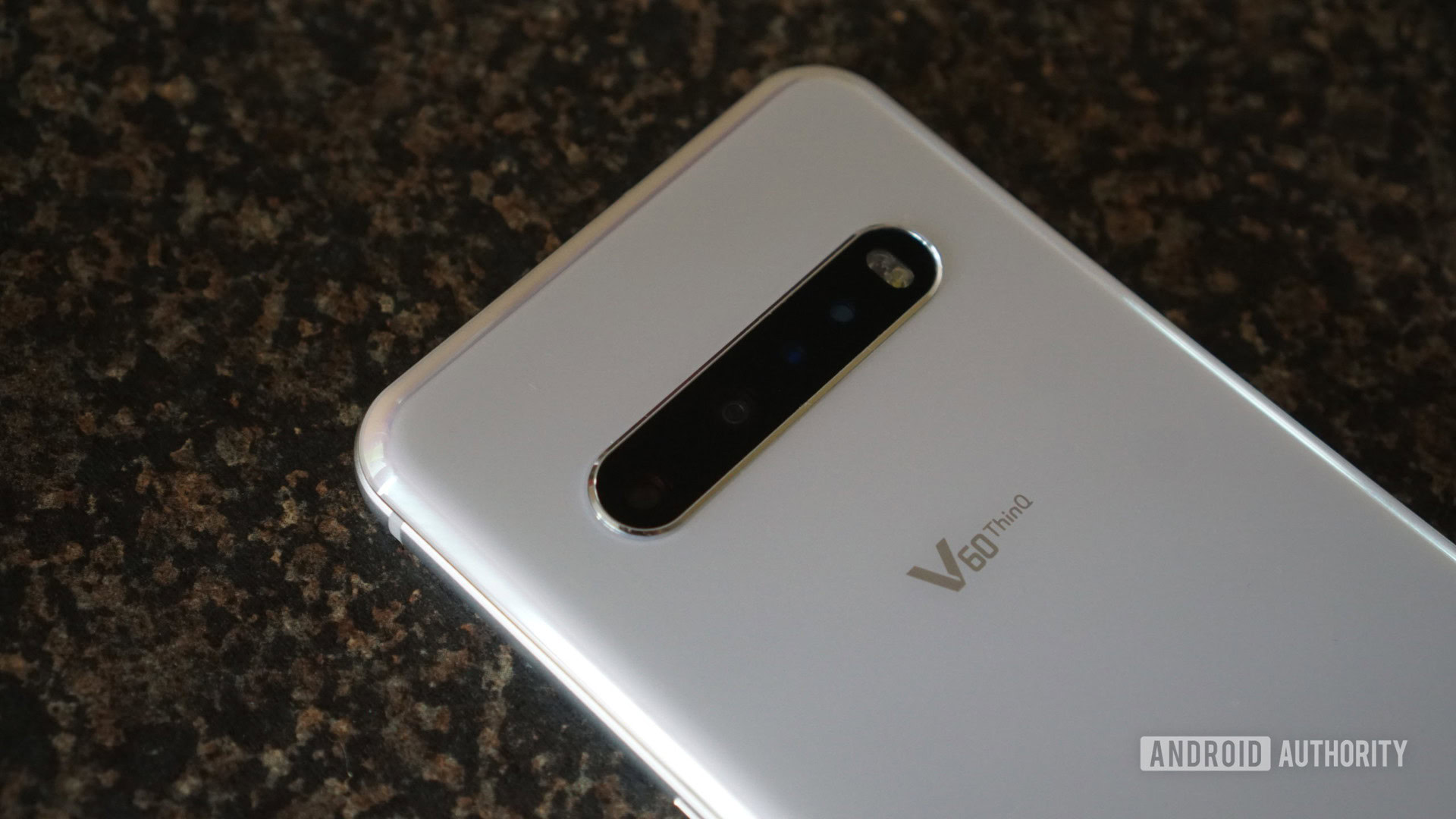
LG is considered a second-tier player for the camera experience, behind the likes of Apple, Google, Samsung, and HUAWEI. However, the LG V60 definitely does a lot to narrow the gap.
Daytime image quality from the main camera contains a pleasant amount of saturation. You definitely have enough resolvable detail to crop into shots. The phone does occasionally over-sharpen images and veers towards colder tones, but overall, you’ll be pleased with the results of the camera.
See also: The best camera phones you can get
In low-light situations, the LG V60 has a pretty capable night view mode that boosts image quality and brightness. It’s no HUAWEI in absolute darkness, but you can still achieve a significantly brighter image by utilizing the night view option over the standard mode. Some noise can be visible without pixel-peeping, though. It’s also a major plus that you can use night mode with the ultra-wide camera, but we would’ve liked it on the selfie snapper too.
The LG V60 lacks a telephoto camera, opting instead for 2x digital zoom via a toggle in the camera app. Shots with 2x zoom can still deliver detailed results during the day, aalthough you’ll notice oil painting looks, various artifacts (e.g. purple fringing, blown-out highlights), and a major dip in detail when zooming beyond this. You can see this in the comparison with the HUAWEI Mate 20 Pro below.
The presence of ghosting or blurring at 2x zoom or more suggests that either the multi-frame processing isn’t fast enough or that OIS isn’t keeping things sufficiently steady. Zoom in on the 2x zoom picture of the bird in the gallery below and you’ll notice a very faint splotch above the dropped object. This is understandable given the fast-moving nature of the scene, and it’s such a tiny splotch that it doesn’t detract from the overall snap. This ghosting is way worse at 5x zoom in the second image, along with an ocean that’s been smeared into a mess.
The ultra-wide camera generally does a good job of capturing landscapes, but it certainly feels like LG could’ve upped the ante here. Soft, splotchy edges devoid of resolvable detail aren’t uncommon here. This is apparent when you zoom in on the tree in the image below. We would’ve liked to see autofocus here to possibly improve matters, while also enabling macro shots without a dedicated camera. Still, the LG V60’s ultra-wide snapper usually delivers consistent colors compared to the main camera, and distortion is kept in check, mostly.

Otherwise, the phone serves up a solid variety of camera features, such as super steady recording, a quirky ASMR mode, a cinemagraph mode (download required), a time-lapse option, audio zoom capabilities, and manual video with a host of audio options.
It’s clear the V60 delivers significant results a year later with the core primary camera experience. Zoom and ultra-wide areas are where LG is lagging behind the competition, however. The 2x digital zoom option can be handy, but there’s clearly no replacement for a dedicated telephoto camera with hybrid zoom for longer range.
The LG V60 has a feature-packed camera, but the lack of a telephoto lens and the ultra-wide shooter's lack of polish still stings.
The lack of a telephoto camera is likely because of profit margin considerations. The same doesn’t apply for the ultra-wide camera. For an innovator in the ultra-wide camera space, it’s disappointing to see rival brands pass LG in terms of polish and versatility.
A few missed opportunities
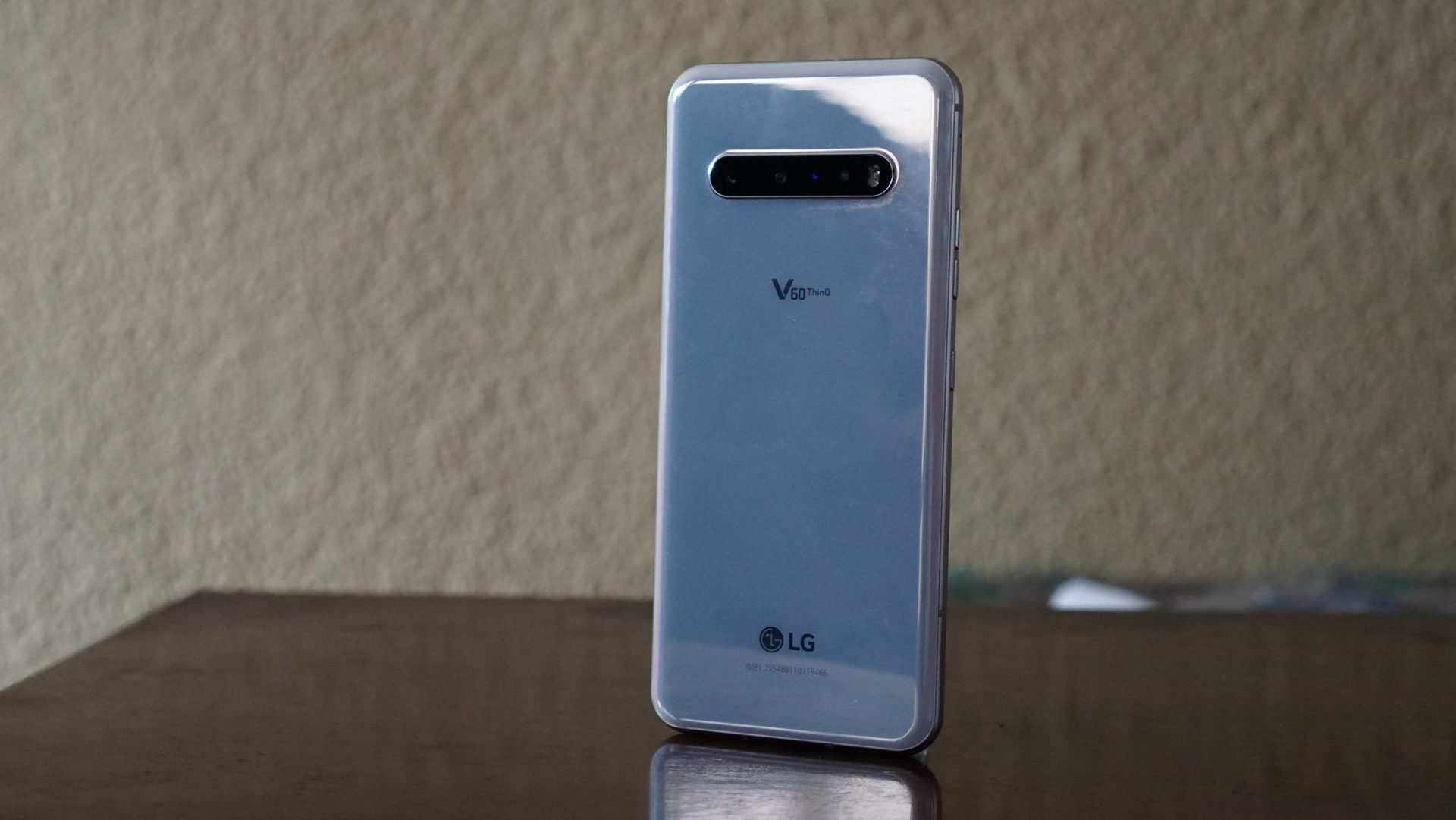
No smartphone is ever perfect, and LG’s recent flagship phones are no exception. The LG V60 is definitely as close to a perfect phone as the company has gotten to in years. Yet there are still a few omissions or areas of improvement for the device:
High refresh rate
We thought LG should’ve added a high refresh rate to the screen last year, and that downside has only become more apparent in 2021. High refresh rates are found even on budget phones today. That’s not to say the screen isn’t a smooth experience, but a high refresh rate (at even 90Hz) would’ve been a bonus.
No telephoto camera
LG isn’t the only company to drop the telephoto camera in 2020. Google did the same for the Pixel 5. LG’s hybrid/software approach to zoom is clearly not a substitute for a telephoto camera at mid-to-long range though. The 2x zoom option delivers respectable results in good lighting. However, even older phones with telephoto cameras deliver better results beyond this point.
Volume controls
LG made the decision to shift the volume buttons to the left-hand side. This is still something that hasn’t become second nature just yet. In fact, I picked up on the Pixel range’s power-button-above-volume-rocker arrangement in way less time. It’s not the worst thing in the world, but it’s definitely weird if you’re coming from almost any other phone.
Another minor volume-related complaint comes with the Android 11 update, which added a strangely unintuitive volume UI. Tapping the volume rocker reveals the full volume bar along with a shortcut to ringtone/media/call volume options. Any subsequent taps of the rocker hide the shortcut key and reveal only a tiny sliver of the volume bar. This means you have to wait for the volume menu to disappear and then tap the rocker again if you want to adjust anything other than the default volume. It definitely seems like a change for change’s sake rather than an actual improvement.
Fast charging
Battery life has generally been really great with the LG V60 one year later. However, the lack of ultra-fast charging is even more apparent in 2021. The phone ships with a 25W charger in the box, sharing the same charging speed as Samsung’s recent flagships. It takes roughly 90 minutes to charge the phone, which is solid for a phone with a battery of this size. It would’ve been great to see LG shave a few minutes off by offering faster speeds, though. Some users might argue that faster charging speeds degrade the battery at an even faster rate. Yet, LG already ships with an adaptive charging feature and there’s no reason why ultra-fast charging shouldn’t be a toggle in the settings menu either.
Fix the auto-brightness
Auto-brightness on the V60 is pretty horrible. The phone tends to switch to an almost unreadable brightness at the mere hint of ambient light dropping, forcing you to eventually increase the brightness. It’s unclear why this is the case, but comments online suggest it’s been this bad for well over eight months.
LG V60 long-term review: The verdict
At the full $900 launch price, it would’ve been tough to recommend the LG V60 over the Samsung Galaxy S20 FE and the Galaxy S21. However, LG’s phone has seen a steep discount since then at under $500. It’s an absolute steal at this price, considering all the features. Between the water resistance, wireless charging, powerful processor, the large battery, and a 3.5mm port with quad DAC, it’s clear that the LG V60 brings a lot to the table.
LG V60 one year later: Is it still worth buying?
It didn’t quite tick all the boxes back in 2020, and it still doesn’t today. However, it would be a shame if this is the last traditional LG flagship phone we ever see. For better or worse, it demonstrates LG’s willingness to forge its own path in the industry.
